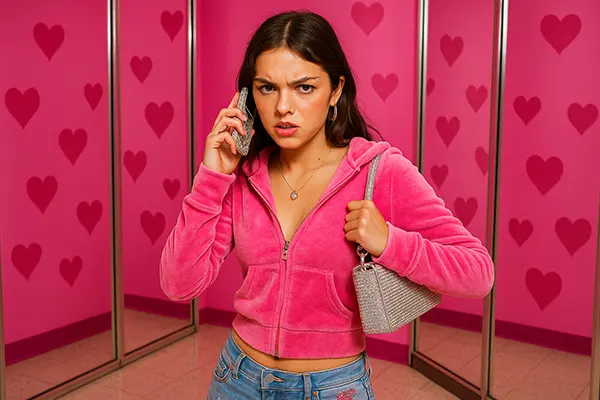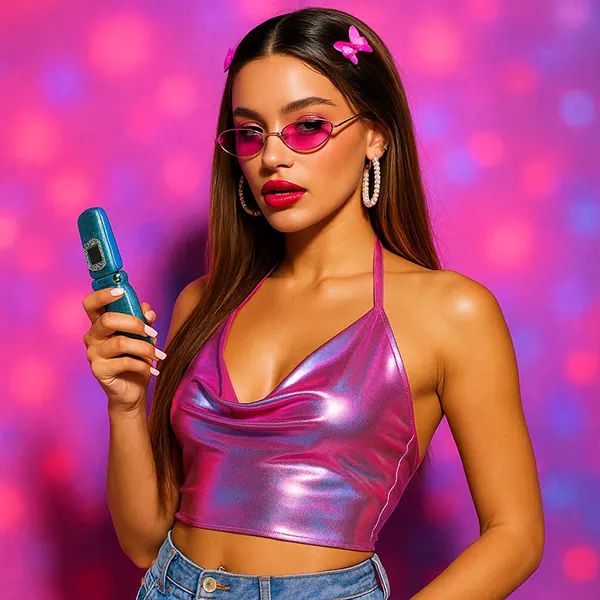
The Return of 2000s Fashion in 2025 Music Videos: A New Nostalgia Wave
In 2025, the global music scene finds itself enthralled by a distinct throwback: the bold, glossy, and occasionally chaotic style of the 2000s. Far from being a fleeting visual gimmick, this Y2K revival in music videos has evolved into a powerful cultural statement. With global icons such as Dua Lipa, Doja Cat, and Olivia Rodrigo leading the trend, a new generation of fans is rediscovering — and reinterpreting — a fashion era that once defined millennial pop culture.
Visual Throwbacks in Modern Clips
Dua Lipa’s June 2025 video for “Digital Flame” showcases iridescent low-rise pants, metallic halters, and tinted sunglasses — all iconic Y2K staples. Olivia Rodrigo’s emotionally-charged “Mirror Room” recreates the pink-toned aesthetic of early Britney Spears visuals, while Doja Cat’s “Cyber Fantasy” features rhinestone phone cases and velour tracksuits, echoing Paris Hilton’s 2000s image. These choices aren’t accidental; they’re tightly coordinated efforts to visually connect with nostalgic audiences while maintaining relevance among Gen Z viewers.
This return to 2000s aesthetics is not merely stylistic but deeply narrative. Set designs often mimic mall interiors, flip phones are used as props, and lens filters give off a soft glow reminiscent of early MTV. The revival is not ironic — it’s celebratory. For artists like Lipa and Rodrigo, who grew up during this era, the embrace feels personal yet universally resonant.
The fascination with the Y2K era is bolstered by an understanding that fashion cycles are increasingly shorter. Rather than waiting decades, pop culture now recycles looks at hyper-speed, and 2000s aesthetics, rich in visual tropes and recognisable markers, offer the perfect material for reinvention and reinterpretation in 2025.
Why Y2K Works on Screen
The 2000s style is inherently photogenic: glossy lips, shiny materials, exaggerated accessories, and bold hair colours all translate beautifully to the music video format. It’s an era that was already built for screens — albeit CRT monitors — and finds a natural fit in today’s high-resolution digital world.
Moreover, the playful nature of Y2K style contrasts sharply with the minimalism that dominated the late 2010s. Viewers are now craving more texture, colour, and character. This shift aligns perfectly with artists’ desire to create instantly shareable and memorable visual experiences that go viral on TikTok, Instagram, and YouTube Shorts.
What makes this trend sustainable, however, is its adaptability. It’s not about replication — it’s reinterpretation. Artists borrow elements — such as frosted makeup or butterfly motifs — and blend them with modern fashion sensibilities. This mixture results in visuals that are at once nostalgic and innovative.
Fashion Houses and Pop Stars Unite
The 2025 music video landscape is also defined by a surge in designer-musician collaborations that tap directly into the Y2K trend. Labels like Blumarine, Diesel, and Juicy Couture have found new relevance by dressing stars in looks straight from their archival collections. Meanwhile, brands like Heaven by Marc Jacobs have leaned fully into the nostalgia wave, partnering with stylists on exclusive one-off pieces for major video productions.
Dua Lipa, known for her close ties to Versace, helped reintroduce their early 2000s silhouettes to a modern audience, wearing reimagined denim sets and studded micro dresses that once adorned red carpets two decades ago. Olivia Rodrigo collaborated with British designer Ashley Williams for her “Mirror Room” video, mixing punky 2000s vibes with youth-culture rebellion.
In these partnerships, fashion is no longer a backdrop — it is part of the story. Wardrobe choices are made in coordination with the video’s plot, lighting, and set, ensuring a unified aesthetic. This synergy strengthens the cultural impact of the visuals, making the fashion moments as talked about as the music itself.
Designers as Visual Architects
Top stylists like Brett Alan Nelson (Doja Cat) and Lorenzo Posocco (Dua Lipa) now operate as creative directors, collaborating closely with directors and designers to curate a visual experience rather than just a costume change. This approach has elevated the role of fashion in music videos from stylistic support to central narrative device.
Collections inspired by music videos are also making their way to consumers. Doja Cat’s “Cyber Fantasy” led to a limited drop of Y2K-style accessories co-designed with an emerging streetwear label. Fans are no longer passive viewers but participants in the aesthetic economy.
In this ecosystem, nostalgia becomes both a marketing strategy and an emotional hook. Fans find comfort in familiarity while enjoying its updated, bolder interpretation. The loop between designer, artist, and audience is more direct than ever before.

The Role of Social Media in Trend Amplification
In 2025, TikTok and Instagram remain dominant forces in shaping visual culture, and both have been instrumental in reviving and spreading Y2K fashion. As music video snippets trend online, the looks featured in them often go viral, with users recreating makeup, hairstyles, and outfits in short-form content and tutorials.
“Y2K tutorial” and “2000s aesthetic” are now common hashtags with billions of views. Viral challenges like the #Y2KGlowUp have brought Gen Z and Millennials into a shared visual space, further fuelling the demand for more nostalgia-infused music content. Every new video release becomes a potential trend seed.
Moreover, social media facilitates the feedback loop between fans and artists. Comments, shares, and tags directly inform stylists and creative directors of what’s resonating. Olivia Rodrigo’s team reportedly integrated fan-favourite elements from older looks into her latest video, showcasing the immediacy and responsiveness of trend production in the digital era.
Digital Influence on Aesthetic Choices
The internet’s obsession with microtrends has accelerated the popularity of niche 2000s aesthetics. Substyles like “cybercore,” “mall goth,” and “bratzcore” are now being referenced by mainstream artists, pulled directly from social feeds into high-budget music visuals.
These references are rarely surface-level. Artists are tapping into communities, meme aesthetics, and even archive photo dumps to build deeply referential visuals that feel authentic. When Dua Lipa recreated a look from a 2003 Gwen Stefani appearance, fans immediately recognised the homage and celebrated it online.
Ultimately, the music video has become more than just a song’s companion — it’s a curated cultural artefact. And in 2025, that artefact is wearing butterfly clips, low-rise jeans, and tinted pink glasses, all underpinned by the nostalgic power of the Y2K aesthetic.
